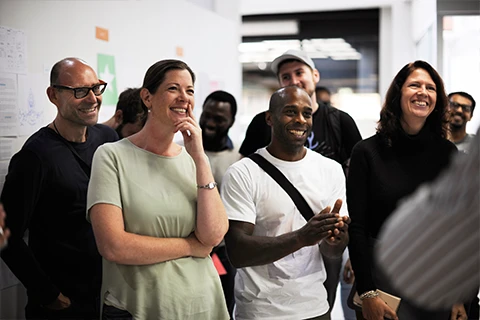Research indicates that the most effective way to achieve results in the business world is to simplify processes to their core. Successful leaders can deliver their messages effectively and quickly using simple methods.
Simplifying performance evaluation processes and making them easily understandable for employees enhances the efficiency of the process. To deliver the desired message to employees much more effectively and quickly, a simple, gradual, and straightforward structure should be designed. An evaluation process that is difficult to understand, time-consuming, and bureaucratic can lead to disillusionment for employees, causing them to lose faith in the process and hindering the recording of their actual performance.
In the classic annual performance evaluation method, often referred to as “performance appraisal,” discussing and conveying the evaluation of the entire year in one go means attempting to accomplish a lot of work at once. Addressing and evaluating work and behaviors spread throughout the entire year in one meeting puts a heavy burden on both managers and employees, causing stress. For a manager profile with an average of 5 to 10 subordinates, such an evaluation and feedback process is not efficient.
Continuous performance management is a method developed to enhance employees’ development and performance throughout the year. This method prioritizes development through regular feedback.
Now, let’s detail what comprises this method.
Dynamic, Short-Term Goals Created through Collaboration
Instead of annual goals, it is preferable to use 3-4 month goals that prioritize market conditions and competition, with regular tracking and monitoring of these goals’ validity and appropriateness. Goals should be created at the departmental and individual levels through collaboration and coordination of different units and individuals in line with the company’s strategic goals. In this regard, the use of the OKR goal-setting methodology is highly beneficial.
1:1 Meetings Between Managers and Employees
Monthly (in intervals of 2-4 weeks), managers and employees come together to review goal progress, completed tasks, feedback from colleagues, development points, and other needs through regular feedback. In these meetings, managers are expected to clearly state their expectations, employees should collaborate in finding solutions based on feedback from their peers, and employees are also expected to use these inputs for self-improvement. Scoring is not done in these meetings, and there is no need to fill out long forms. The meetings are summarized, providing input for the next meeting. The format of these meetings may vary depending on the organization, the nature of the work, and the need, and the most suitable one should be selected for the organization.
Regular Feedback from the Entire Team
Continuous feedback from colleagues and managers, as well as continuous awards and recognition throughout the year, ensure that the process is ongoing. Feedback is used in 1:1 meetings, enriching discussions and incorporating different perspectives into them. Continuous feedback can take different forms depending on the company’s culture or may not be used at all.
Data from Other Sources
In addition to data collected from surveys of customers, data collected through technological systems (such as speech quality or problem-solving speed for call centers) can be made visible to both employees and managers, and evaluated as an area for improvement through 1:1 meetings.
Depending on the organization’s needs and culture, continuous performance management can be used alongside the year-end performance evaluation process. For example, a company that uses performance evaluation scores as an input for bonuses can use continuous performance management to ensure that year-end scores are given more accurately. Many companies maintain both methods together in this way.
During this process, managers are expected to act as coaches and help employees develop. Therefore, managers need to be supported in gaining this competency throughout the process, strengthening their leadership skills with feedback, coaching, and collaboration. These skills should be measured by regular assessments by employees and should guide managers in their development.







